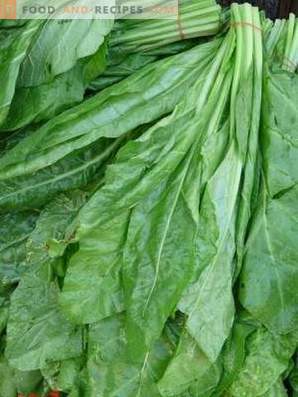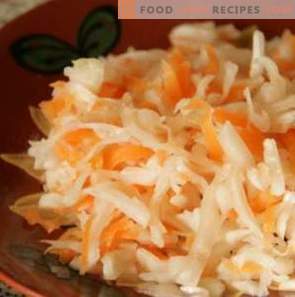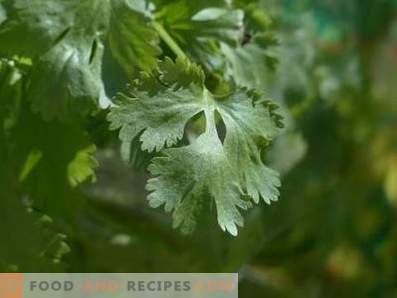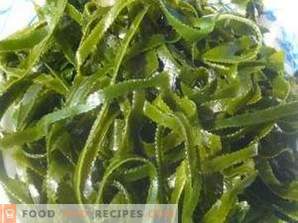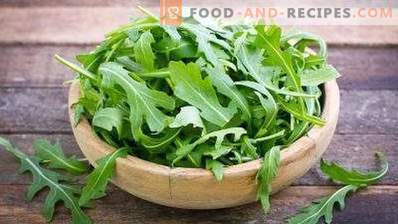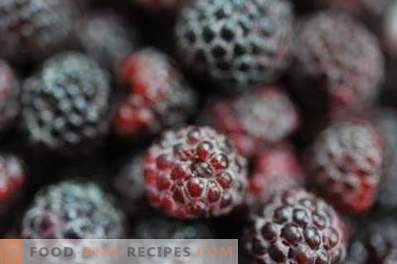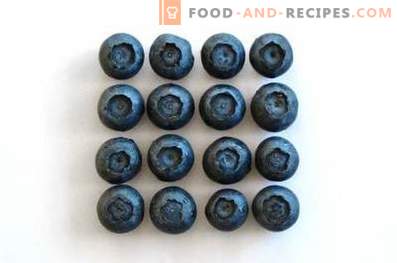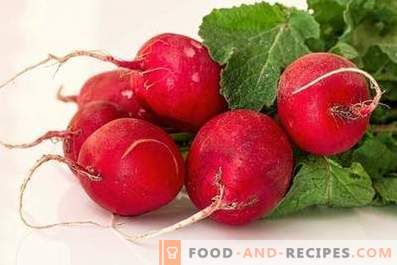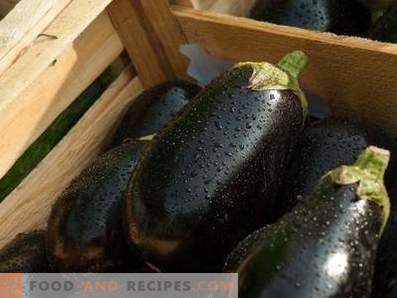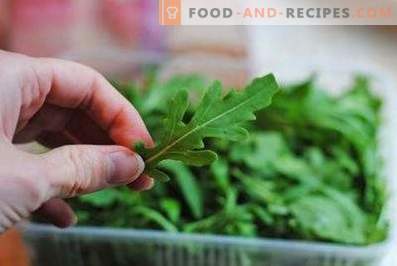
A sowing caterpillar, or arugula, is a herbaceous plant belonging to the Cabbage family. Homeland culture - the northern part of Africa, Central and Southern Europe. In these territories, its wild-growing species still grow.
The first mention of arugula are found in ancient writings. It is known that the ancient Romans used the greens of this plant as a spice. Arugula received wide popularity in England. Queen Elizabeth asked the court chef to add this healthy, fragrant green with a bright mustard-nut flavor to her salads daily.
Over time, arugula spread throughout the world. Today it is grown on all continents of the planet, except Antarctica. Green plants are used to make sauces, pizza, salads, vegetable dishes, desserts, cold dishes and alcoholic beverages.
Botanical description
Arugula is an annual plant up to 400 mm high, with a taproot and a branchy, upright stem planted with many hard hairs. Basal lyre-pinnately dissected leaves of the culture sit on short (no more than 20 mm) petioles and form a lush rosette. The shape of the leaf blades depends on the type and variety of the plant.
Arugula blooms in late May or June with small yellowish, white or pale pink flowers. Inflorescences of plants are loose elongated brush. The fruit of the culture is a long pod, inside of which there are 2 rows of rounded light brown peas. Seeds of plants ripen in late July or early August.
Nutritional value of arugula
100 g of green plants contains:
- 2, 576 g of proteins;
- 0, 659 g of fat;
- 3, 642 g of carbohydrates;
- 1, 544 g of dietary fiber;
- 2, 047 g of sugars (monosaccharides and disaccharides);
- 1, 369 g of ash.
The concentration of water in arugula is 91, 708 g per 100 g.
Vitamins in the composition of the product
100 g of a sowing caterpillar contains the following vitamins:
- A, retinol equivalent - 118, 401 mkg;
- lutein, zeaxanthin - 3, 559 mg;
- beta-carotene - 1, 423 mg;
- B1, thiamine - 0, 042 mg;
- B2, riboflavin - 0, 087 mg;
- B4, choline - 15, 299 mg;
- B5, pantothenate - 0, 436 mg;
- B6, pyridoxine - 0, 071 mg;
- B9, folic acid - 96, 704 μg;
- C, ascorbic acid - 14, 806 mg;
- E, alpha-tocopherol and tocopherol equivalent - 0, 427 mg;
- PP, niacin equivalent - 0, 304 mg;
- K, phylloquinone - 108, 574 mcg.
Also in the composition of arugula there is a vitamin-like compound betaine. Its concentration in 100 g of the edible part of the product - 0, 093 mg.
Useful elements in the green of the plant
Trace elements in 100 g of arugula:
- iron - 1, 457 mg;
- manganese - 0, 322 mg;
- zinc - 0, 464 mg;
- copper - 76, 312 mkg;
- selenium - 0, 298 mkg.
Macroelements per 100 g of product:
- sodium - 26, 804 mg; m
- potassium - 368, 783 mg;
- phosphorus - 51, 662 mg;
- magnesium - 46.077 mg;
- calcium - 159, 012 mg.
Calories
The energy value of raw arugula is 24, 771 kcal per 100 g. A small bunch of greenery of this plant contains only 5, 5 kcal.
Benefits of arugula
- Useful elements and vitamins with which the sowing caterpillar is rich help avoid beriberi. In order to replenish the reserves of essential nutrients in the body, it is enough to eat a small bundle of greens of this plant per day.
- Arugula accelerates the metabolism and helps burn fat. That is why dishes from its greenery are useful for people seeking to lose weight.
- Useful compounds that are rich in the ground part of this plant, promote the removal of harmful cholesterol from the body. Regular consumption of this product helps to reduce the risk of atherosclerosis.
- A sowing caterpillar is useful for people suffering from anemia. It is proved that its greens contain nutrients that activate the production of hemoglobin.
- Dishes from this product help to quickly lower blood pressure in hypertension.
- In the green of the plant there are compounds with antibacterial properties. Therefore, the decoction prepared from it is used for rinsing the mouth for dental diseases and sore throat, for washing non-healing purulent wounds.
- Salads from the leaves of a seed caterpillar are useful to people prone to cardiac diseases. Nutrients entering the body through the use of this product strengthen the venous walls and myocardium, normalize the heart rhythm, prevent the formation of blood clots.
- In folk medicine, arugula juice treats corns. A gauze swab soaked in a liquid is tied to the problem area for 4-6 hours. The procedure is repeated daily until the corn has disappeared.
- Useful compounds that enter the gastrointestinal tract by consuming the leaves of a seed caterpillar speed up the healing of gastric and duodenal ulcers.
- Arugula contains substances that normalize water-salt metabolism in the body.
- Salads from the greens of this plant help prevent the occurrence of malfunctions of the digestive tract, enhance peristalsis, prevent the development of putrefactive processes in the intestine.
- It has been proven that compounds that reduce the concentration of sugar in the blood of diabetics are present in the terrestrial part of the culture.
- Broth from arugula leaves has expectorant properties. Therefore, it is recommended to drink it with a long unproductive cough, bronchitis, tracheitis and pneumonia.
- An infusion of green plants is used to treat dermatological diseases. The problem area is wiped with liquid at least 7 times a day.
- Dishes from a sowing caterpillar have diuretic properties.
- Arugula is rich in nutrients that strengthen the nervous system. People who regularly consume its greens, become less irritable, less likely to suffer from depression, better tolerate stress.
- Dishes from a sowing caterpillar help to get rid of somnological disorders.
- Nutrients contained in the terrestrial part of the plant increase visual acuity, protect the visual apparatus from overwork at high loads.
- Arugula greens are useful for people suffering from frequent colds and infectious diseases. Nutrients included in its composition, increase the body's immune defense and its ability to resist infections.
- The antioxidants that this plant is rich in help to prolong youth and reduce the risk of cancer.
- Arugula is a natural aphrodisiac. In addition, the green of the plant normalizes the reproductive system in men and women, improves the composition of the ejaculate, increases the likelihood of conception.
- The product has tonic properties, increases efficiency, helps to concentrate for a long time on solving the set tasks.
Use of arugula in cosmetology
- Regular consumption of arugula helps strengthen hair, prevent its pathological loss and enhance growth.
- From the greenery of the plant they prepare lotion that brightens pigment spots and eliminates freckles. Chopped arugula (100 g) pour 240 ml of olive oil and leave in the dark for 2 weeks. Strain the skin with a filtered liquid.
- To prepare a moisturizing mask of arugula, a small handful of crushed herbs of the plant is mixed with 2 tbsp. spoons of cottage cheese and 1 teaspoon sour cream. The mass is applied to the skin, left for 17-20 minutes and washed with chamomile decoction.
- A mask that rejuvenates the skin and increases its elasticity is prepared from the seed caterpillar. The crushed greens of a plant (5-7 branches) are combined with beaten egg white and 40 drops of olive oil. The resulting mass is applied in layers on problem areas and left for 45 minutes.
Contraindications and harm of arugula
- A seed track is a potential allergen. Most often, intolerance to this product is found in people who are allergic to radish and turnips.
- Nutritionists do not recommend eating a lot of arugula to persons who have previously been diagnosed with kidney disease, liver disease or biliary dyskinesia.
- It is undesirable to use dishes from this product to pregnant women and mothers who are breastfeeding.
- Green caterpillar salads are contraindicated in gout and other autoimmune pathologies.
- It has been proven that arugula quickly accumulates heavy metal salts. Therefore, nutritionists do not advise eating plants grown in regions with an unfavorable environmental situation.

